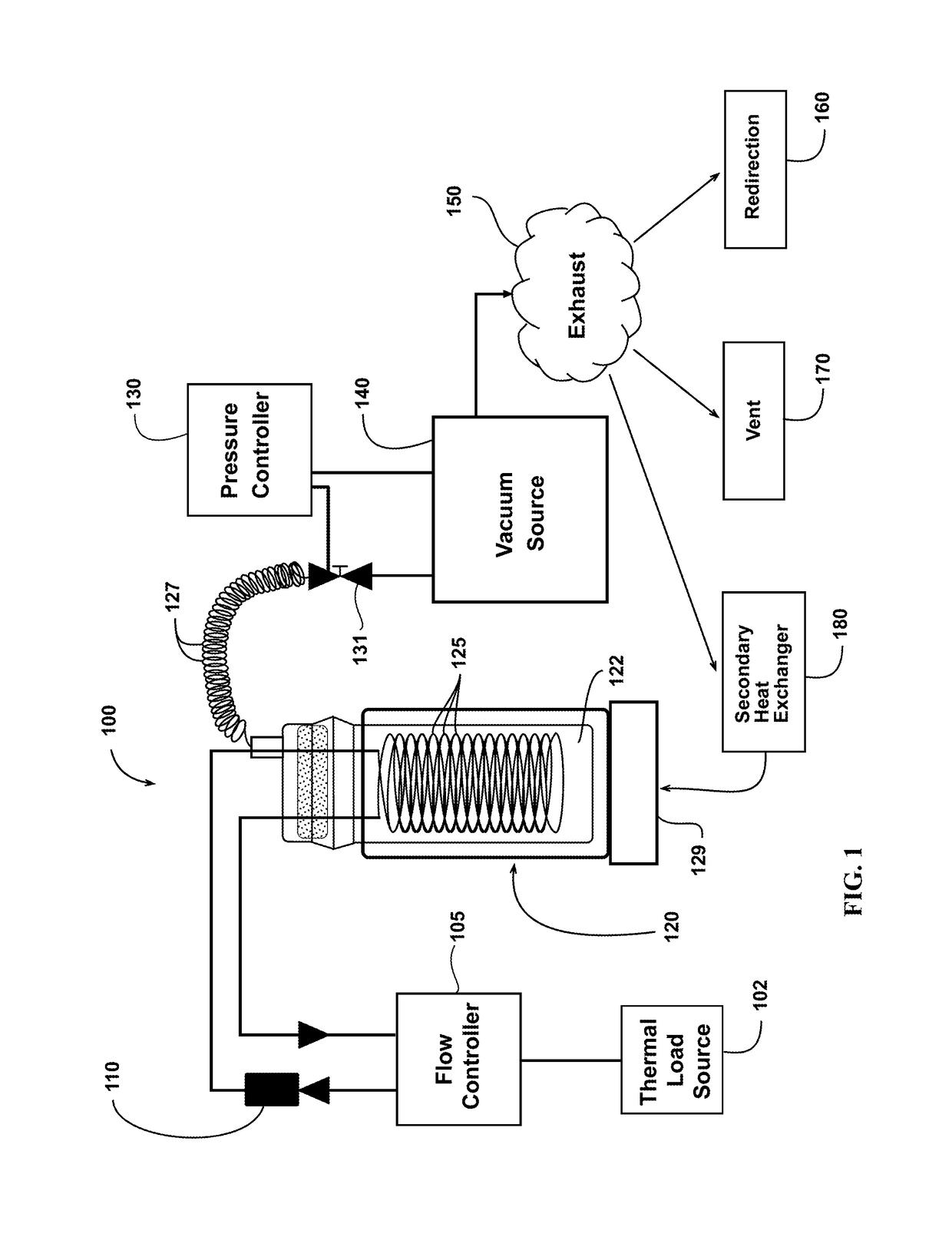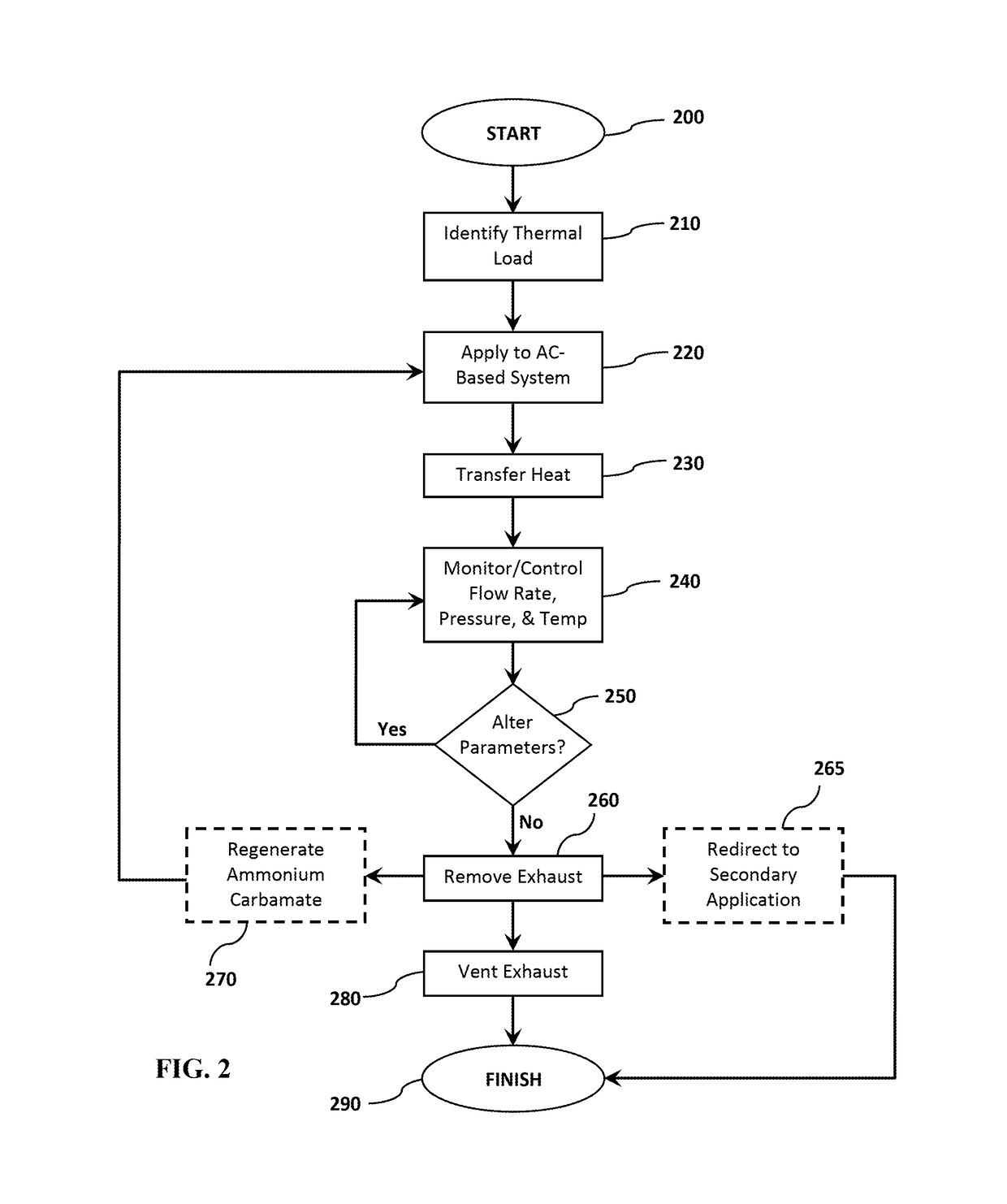Method for thermal management through use of ammonium carbamate
a technology of ammonium carbamate and thermal management, applied in the field of thermal management, can solve the problems of low quality heat, low quality heat, and low heat generation efficiency, and achieve the effect of low quality and efficient management of thermal loads
- Summary
- Abstract
- Description
- Claims
- Application Information
AI Technical Summary
Benefits of technology
Problems solved by technology
Method used
Image
Examples
example 1
Evaluation of Heat Transfer Fluids
[0066]Tetraglyme (b.p. 275° C.), ethylene glycol (EG; b.p. 197° C.), and propylene glycol (PG; b.p. 187° C.) are evaluated by measuring the decomposition of ammonium carbamate as a bare powder and in each liquid as a function of temperature under vacuum (1×10−5 torr) at 30° C. Prior to use, all fluids are dried over 3 Å molecular sieves to remove any water. Decomposition experiments are conducted using a 300 mL high vacuum Schlenk tube with 18.5 g of ammonium carbamate powder and 50 mL of each heat transfer fluid. All inert gases in the tubes are removed using a vacuum line. Prior to the experiment, the Schlenk tubes are immersed in a temperature controlled water bath for a minimum of 30 minutes to ensure thermal equilibrium. Decomposition experiments are carried out by exposing the reaction vessels to high vacuum in five minute intervals and weighing the flask between each interval to find the amount of ammonium carbamate lost.
[0067]The conversion ...
example 2
Fabrication and Testing of an Ammonium Carbamate-Based Thermal Management System
[0068]An ammonium carbamate-based thermal management system is constructed (see FIG. 1). The heat exchanger in the small-scale test system is constructed based on a 500 mL reaction vessel. The fluid in the heat exchanger is stirred using a stir plate and a magnetic stir bar. A laboratory water circulator linked to a series of coils serves as a simulated thermal load for the system. The temperature of the reactor is controlled using the laboratory circulator, and the system is brought to each test temperature before addition of the ammonium carbamate. The pressure of the reaction vessel is controlled using a diaphragm vacuum pump, which is controlled by a pressure controller using a solenoid valve to maintain system pressure.
[0069]Multiple combinations of temperature, pressure, and heat transfer solvents are tested using the ammonium carbamate-based thermal management system. The experimental procedure at...
PUM
 Login to View More
Login to View More Abstract
Description
Claims
Application Information
 Login to View More
Login to View More - R&D
- Intellectual Property
- Life Sciences
- Materials
- Tech Scout
- Unparalleled Data Quality
- Higher Quality Content
- 60% Fewer Hallucinations
Browse by: Latest US Patents, China's latest patents, Technical Efficacy Thesaurus, Application Domain, Technology Topic, Popular Technical Reports.
© 2025 PatSnap. All rights reserved.Legal|Privacy policy|Modern Slavery Act Transparency Statement|Sitemap|About US| Contact US: help@patsnap.com



